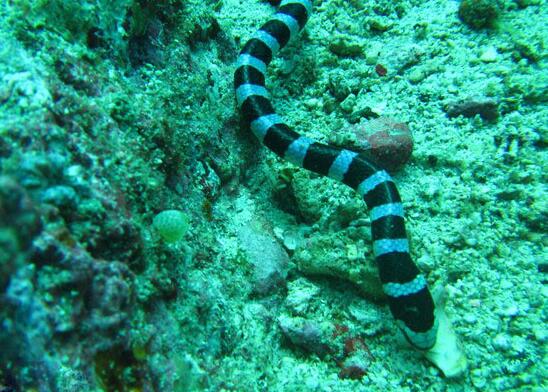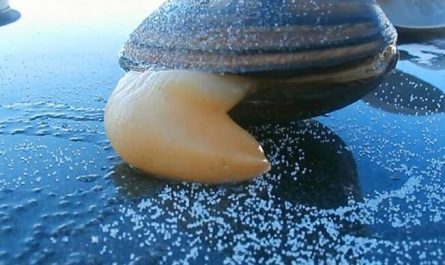Snakes have traces of activity in many parts of the world. Some snakes are non-venomous and some are poisonous. But for people who work at sea all year round, sea snakes are the most terrifying animal. Generally, human beings are life-threatening if they are bitten by sea snakes. Because all sea snakes are venomous snakes, the toxicity of general sea snakes exceeds that of the “king of snakes” cobra. Does this highly venomous sea snake live in the sea for life? Will they go ashore?
The appearance of sea snakes is basically the same as that of snakes on land. Both have slender and smooth bodies and fangs in their mouths. Due to the different living environment, some of the scales on the sea snake’s skin have degenerated, and some of the abdomen even have no scales. A sea snake without the scales on its abdomen cannot crawl on land, and must live in the sea for life.
The skin under the scales of most sea snakes is thicker. This is because the salinity of the seawater is relatively high, so that the thicker skin can block the infiltration of the seawater. There are salt glands under the tongue of sea snakes, which can excrete excessive salt from the body.
In order to adapt to the environment in the sea, the tails of sea snakes are not as slender as land snakes. Their tails have evolved into flat tails like boat oars. Such a tail can better grasp the direction when swimming in the sea.
Like land snakes, sea snakes rely on their lungs to breathe. Although they can survive in water, they cannot dive long-term. The air sacs of the sea snake’s lungs are very developed, starting from the throat and extending to the tail. Such a powerful lung is for storing more oxygen, and for controlling the sinking and rising of the body like a fish bladder. In order to adapt to life in the sea, sea snakes have nostrils that open upwards. Inside the nostrils are a pair of valves that can be opened and closed at any time, so that sea water cannot enter the body from the nasal cavity.
Sea snakes and land snakes are both temperature-changing animals, and snakes on land will hibernate. Sea snakes are also afraid of cold and cannot survive in cold waters, so it can live in tropical or subtropical Pacific and Indian oceans. And because sea snakes need to breathe on the surface, they generally live in shallow seas or at the confluence of seas and rivers.
Like land snakes, sea snakes are divided into oviparous and ovoviviparous. Fully aquatic sea snakes reproduce as viviparous, while sea snakes that can go ashore crawl back to the beach to lay their eggs during the breeding season, allowing them to hatch freely on the beach, and the hatched little sea snakes will crawl back to the sea to live.






